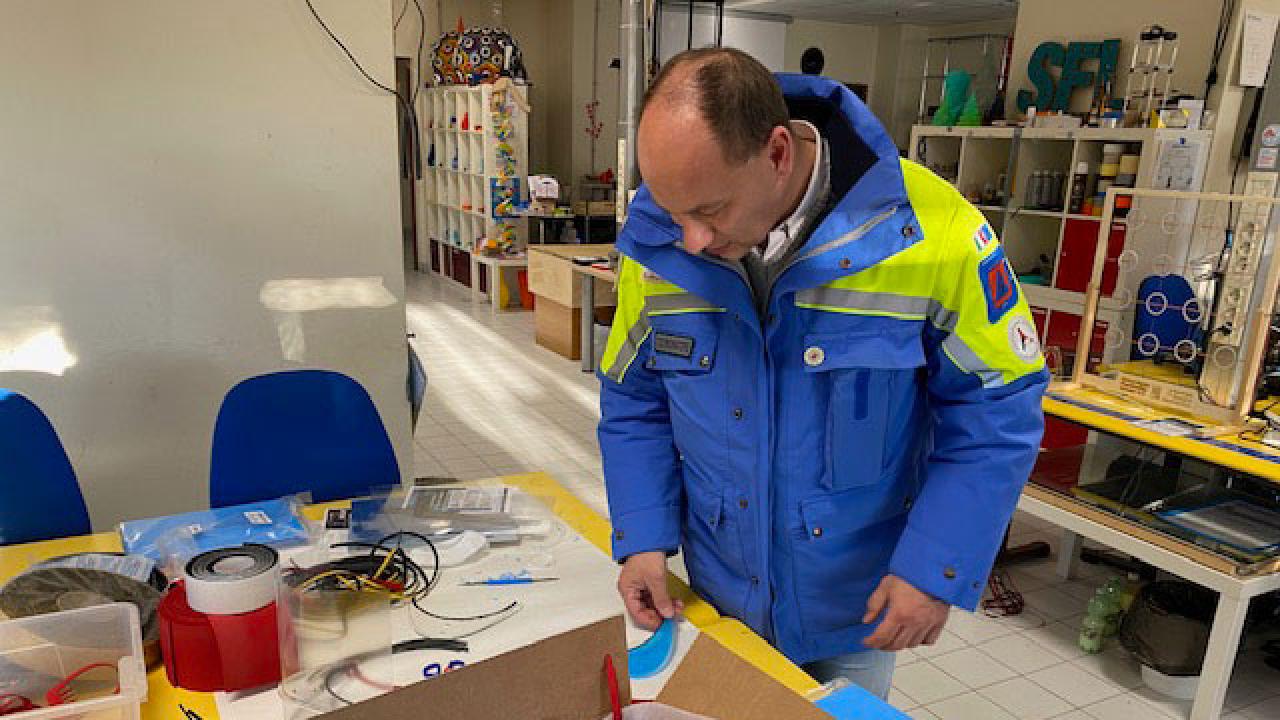
ICTP's SciFabLab is a hub of do-it-yourself innovation. From its selection of 3D printers and laser cutters to its collection of micro-controllers and electronics, the space encourages creativity and innovation. Since its opening in 2014 as the first of its kind in the Friuli Venezia Giulia region, ICTP's SciFabLab has nurtured a community of makers not only by offering first-rate facilities but also thanks to the MakerFaires it organizes every year. That community was recently called upon to apply its innovation skills to a need related to the COVID-19 pandemic.
Italy has been one of the world's hardest hit countries by the coronavirus, straining the country's medical and civil protection resources. As in most countries, the availability of personal protection equipment to protect workers in the front line of the pandemic is scarce. Sensing an opportunity to help those in need, the SciFabLab turned to its community of makers for ideas.
"Social media have been telling a lot of positive stories about makers and fablabs helping hospitals in the red zones, and about 3D printers used for building medical devices and accessories," said Carlo Fonda, a co-director of the SciFabLab along with Enrique Canessa. "So, very soon we published a message on our fablab’s website and Facebook page, saying that our laboratory, its facilities and know-how are available and we are ready to help within our possibilities, explaining what we can do," added Fonda.
Fonda and Canessa were soon contacted by a coordinator from a local civil protection agency. "He told us that it may be a priority for them to get as many facial shields as possible in the following days, since their number is running low and purchase seems to be very difficult," said Fonda. He explained that the Protezione Civile, as it is known in Italy, is composed of volunteers, under the coordination of the mayors of each Italian comune, who provide assistance during emergencies to citizens and to hospitals, although they are not part of the public health service.
As the saying goes, necessity is the mother of invention.
The facial shields would need to be designed and produced by the SciFabLab using the equipment and materials at the lab, a project they had never done before. To solicit ideas, Fonda and Canessa reached out to their maker community via social media channels, a diverse group that included technical assistants from Trieste hospital with knowledge about the devices.
"We started to discuss all possible options to make a large number of facial shield devices, with only the material and the machines available in the SciFabLab, in a short time," explained Fonda. After he and his colleagues researched hundreds of options, they developed their own design, one that could be made with the SciFabLab's laser cutter machine using available material.
A total of 90 facial shields were produced, each comprising a top piece, a transparent sheet, and an elastic band, and easily assembled in a few seconds. "The devices are neither ideal nor perfect, but they are usable and practical, and it is possible to sanitize and reuse them," said Fonda. The local civil protection agency accepted the devices with gratitude, and later distributed them to many emergency service professionals.
For more information about ICTP's SciFabLab, visit its webpage (http://scifablab.ictp.it/). The SciFabLab operates in collaboration with the municipality of Trieste.
--Mary Ann Williams
















